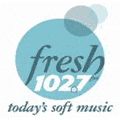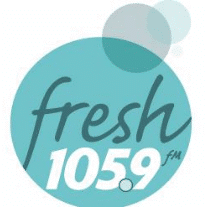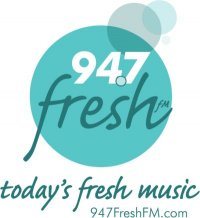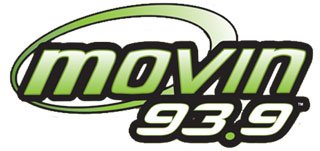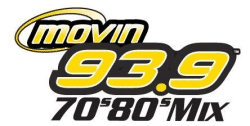A few weeks ago (Mon 4/6) Washington, D.C. radio listeners woke up to a new radio station, as CBS Radio flipped it’s classic rock station WTGB to become 94.7 Fresh FM. “Fresh” is a relatively new format launched a year or so ago by veteran adult contemporary programmer Greg Dunkin. According to Vallie-Richards-Donovan, a radio consultancy that briefly handled licensing of the brand, Fresh is targeted at “[t]he much sought after 25-49 audience” by being “contemporary without being too loud or repetitious.”
Fresh is just one of several radio concepts that has launched in recent years that bills itself as more than just a format, but a complete broadcast brand identity comprised of proprietary programming strategies along with a logo and related trade dress, on-air imaging, brand-specific consulting services, music scheduling, and ongoing promotions and marketing support. I’ve come to call these complete format brand concepts as “branded formats” to distinguish them from traditional satellite-delivered “canned” syndicated formats in use by many small market stations.
Branded formats operate in much the same way a franchise system operates. In a conventional franchise model, the franchisor develops a method of doing business, typically associated with a trademark, and then grants licenses — franchises — to independent business owners — franchisees — to use the methods and the brand in their own communities. The essence of franchising is consistency: to ensure that the franchisor’s trademarks remain strong, every franchisee is required to commit to follow the methods and standards set forth by the franchisor. The franchisor maintains the strength and integrity of its marks by ensuring that the customer experience is identical from location to location. After all, what would a McDonald’s be without the golden arches? What would you think of a Dunkin’ Donuts that didn’t serve coffee?
Although the branded format licensing framework is analogous to franchising, the two approaches differ when it comes to consistency. Unlike a franchise, the licensors of branded formats purport to offer a high degree of customization and local responsiveness. This focus on localism makes sense, given that radio stations are licensed to serve a particular community, and FCC licenses require that stations serve the “public interest, convenience, and necessity.” On a more practical level, different radio markets feature different demographic compositions and different competitive landscapes.
According to Vallie-Richards-Donovan’s web site (based on a printout I made on October 13, 2007; the page no longer exists on the company’s web site), Fresh is highly customizable:
Unlike many nationally distributed formats, the Fresh brand is completely tailored to each market. By customized, we mean that every station is specifically designed to accommodate and exploit the opportunities that exist in your specific market. This customization includes target demographics, music, production elements and marketing campaigns. This process can yield different results in each market. As implied, one fresh fm [sic] station can sound dramatically different from another. Just one way the fresh fm [sic] brand is different from other nationally distributed formats!
The customization of a nationally distributed — and nationally protected through U.S. trademark law — begs the question, “what’s a Fresh FM?”
In a traditional franchise, the franchisee buys into a recognized business model and brand identity instead of launching a business from scratch, thereby eliminating an element of risk — in essence, the franchisee is buying a repuation. In the context of branded formats, the reputational element is somewhat undermined by the fact that a station employing a branded format in one market may sound substantially different than a station in another market with the same format.
Put simply, Fresh in New York might sound significantly different than Fresh in Chicago, even though the two stations share similar, proprietary attributes. That fact begs the question, “what’s a Fresh?” Or more appropriately, what legal protections are (or should be) afforded a national brand identity that means different things in different places?
But like Fresh, MOViN seems to mean different things in different markets. In Los Angeles, the recently-defunct KMVN (MOViN 93.9) featured all “old school” rhythmic AC, that is, rhythmic music from the 70s and 80s; the station also used an imaging package that was distinct from the “standard” station imaging offered by the format’s creator.Another branded format offers a similar example of the apparent tension between broadcast localism and the trademark owner’s interest in maintaining national brand consistency. Created by consultant Alan Burns, the MOViN format targets “28-40 year old women who feel too old for hip-hop, but are bored with rock-based Hot AC and not ready for traditional AC.”
Meanwhile in Phoenix, KMVA (MOViN 97.5) touts itself as playing music from “today and back in the day,” and a few hours of listening confirms that the station is based largely on current music, unlike it’s Los Angeles counterpart.
Moreover, a blurb in Radio & Records recently noted that KYMV in Salt Lake City (MOViN 100.7) has been “directed . . . toward more of a CHR/top 40″ direction,” but that it will retain the MOViN identifier.
Three stations, three markets, three different experiences, but each using the same brand. In a typical franchise context, such differentiation would severely weaken the brand; are radio stations different because of their localism obligations?

